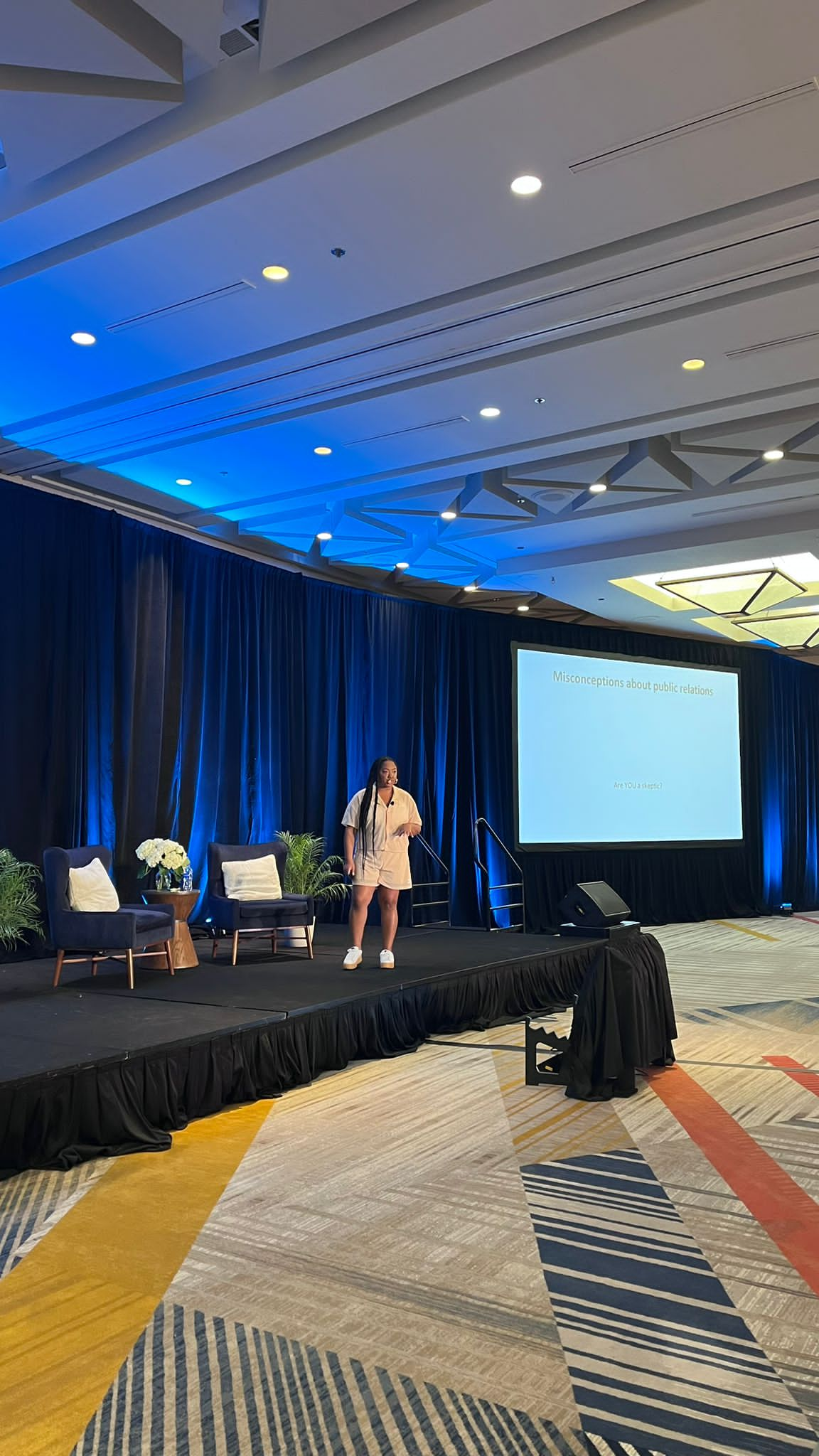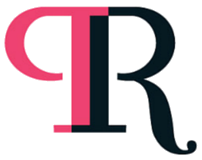
Thank you to those of you who sent well wishes in response to our previous issue’s announcement. Earning the respect of my peers means so much, and your congratulatory messages truly validate all the hard work I’ve put in over the last decade.
My mission to amplify Black voices, and other voices of color, through mainstream channels is only made easier with the help of readers like you. Through my work as a journalist, a business woman, and now, a college professor (I really love the sound of that), it’s such a rewarding experience to be able to share my journey with those who appreciate a good story.
I first started my writing career in 2010, penning articles for hundreds of thousands of readers every month, via newspapers. Then, in 2017, I joined the Forbes team, and after just a few short months, I was recognized as part of the top 1% of writers within their global network. With an intuitive lens for where the industry was headed, that very year, I founded what we all know today as WritersBlok, a celebrity ghostwriting agency. With its launch, my personal brand accelerated much faster than I could keep up with.
While some of you may not agonize over headlines or recognition, the truth of the matter is, media attention has its benefits. When clients pull up on me, I know it’s because I’ve taken the time to increase my market value in this manner. As a result, I don’t have to do a lot of talking; trust is already established before I join the call, or walk into the room.
People may recognize me as a writer, speaker, mentor, educator, and more, but at the end of the day, the common thread is that I’m a storyteller – and a good one, at that. I’ve been storytelling in various capacities for years, and with each newsletter, I hope you’ve been able to take away a small nugget of insight or wisdom to help move the needle with your brand goals, as well. Because if there’s anything that I know to be true about good press, it’s that my career is a perfect example of its lasting benefits. To put it into numbers, I’ve received over 250 media placements in the past few years, without ever having to send a single pitch. But my tactic is slightly different than most.
When I first got started, I was really just a girl with a notebook and a dream. To be clear, I had a vision, but nobody else could see it. Sharing stories about my life experiences on social media – my journey to mental health, and my day-to-day interactions as an entrepreneur – afforded me the opportunity to gain traction in the media, and since then, it’s truly been a snowball effect.
I went from being unknown in my current industry to being featured on countless podcasts, and across the pages of numerous publishing outlets. My most recent appearance in Essence was a result of me sharing my money journey on my personal IG stories. My XONecole and Wealth Simple features were the result of the visibility I gained at speaking engagements, while my features on Black Enterprise and Shondaland were due to my name being mentioned in rooms I hadn’t even stepped foot in yet.
Coincidentally, I share today’s blog post after just returning home from a trip to Phoenix, Arizona, where I was invited to speak at a business conference about how to pitch to the media. By far, this has been one of my most requested keynote topics for the last 5 years.
If there’s one thing I (and most notably, my career) can attest to, is the fact that prioritizing your media attention is a major key. In this ever-expanding digital world, there are so many opportunities wrapped up in our ability to be seen. Even more importantly, once you’ve gained the momentum, your reputation does all the hard work for you by allowing the best people to gravitate towards you.
So, with this in mind, today, let’s discuss what I have coined as the R.A.C.E effect. This is what I like to call my proven four-step process to landing media placements, to show you that you don’t have to own a million dollar brand to get millions of eyes on your work. For some of you, it will also help you see that a publicist isn’t always necessary to get you into the top publications in the world. All it truly comes down to is an understanding of brand positioning.

R.A.C.E to get your face in front of key brand partners, clients, investors, and your network.
R — Readiness
Preparation is by far the most critical aspect of vetting and receiving positive press. The amount of prep work you do in getting to know your own story, your audience, and your network can be directly linked to how visible your brand eventually becomes. Before you even think about pitching to anyone, there are a few key things you need to know like the back of your hand:
- Your founder’s/brand/company story
- The value you plan to bring to your target market
- What makes you the best person for the job? (remember, your background will be verified.)
You should be very clear on what issue or problem your expertise will address, and how your proposed solution will contribute to a larger conversation – one that includes your industry, community, and/or the world, at large. Do. Your. Research. Brush up on your interview skills, and have your creative collateral ready at all times. Your objective here is to make the journalist’s job easier by having your headshots, videos, product photos, case studies, and their info ready, and on hand.
You know, I once had someone email me three times, spelling my name differently with each attempt. Needless to say, it wasn’t cute, and I’m sure you can guess where those emails go when I don’t see Pauleanna written out correctly. Straight to the trash.
Finally, when your article or appearance goes viral, be prepared on the back end to handle the hysteria and increased engagement. The last thing you want is for people to be wild about buying from, or engaging with you, and you don’t have enough content, team members, accessible links, or products to go around.
A — Audience
Identify your goals and ask yourself, not only why you’re seeking press, but think deeply about whose attention you’re trying to grab with it. Remember, your audience is not everyone. When you’re doing the work to secure eyes on your brand, be very specific about who those eyeballs belong to.
Are you speaking to advisors, investors, college students, or mompreneurs? Pick a group and find out as much as you can about them. Where do they live online? How old are they, and where are they primarily located? What are they reading? What kinds of careers do they hold, and what do they like to do in their spare time? The answers to these questions should all align with your core vision and messaging, and, if done right, can help you better navigate where you’d ideally like to be.
While that may be true, always be sure to apply clear discernment to both your vision and your end goal. Just because you want to be published somewhere doesn’t mean it’s the right opportunity for your business. Therefore, being selective about the platform you choose, based on the data you’ve collected, is equally as important as the questions you asked yourself above.
Paying close attention to this detail boosted my SEO when I was featured in Flare Magazine, in 2017. That article has single-handedly attracted more ideal clients than any other feature, past or present. In fact, the very next day, I landed a 5-figure retainer contract.
Whichever publication you choose, your prep work needs to include a quick Google search for their online media kit, which will tell you, in detail, who their readers are.
At ForbesWomen, our readers are millennials, entrepreneurial, and solution-oriented.
At Fast Company, however, their readers include C-suite executives, business decision makers, top-level management, and college students.
Be sure you also have a clear idea of the section within the publication you’re pitching to, and take a genuine interest in it. Maximize your interaction by taking the time to read their shit!
C — Contacts
Though you should be doing your research to find the appropriate contacts, your networking strategy should also include media professionals. A good rule of thumb is to engage with them on social media by genuinely acknowledging their work with positive comments, or a knowledgeable review.
Never underestimate the power of Twitter. Just being observant can organically land you press. Many TV producers, hosts, casting directors, and writers do call outs on Twitter all the time. Even an advanced search can do wonders once you type in keywords like, “Editor,” “Senior Editor,” “Deputy Editor,” “Columnist,” “Segment producer,” “Talent Booker,” “Casting Director,” etc.
Aside from social media, there are other platforms that are specifically designed for connecting people with publications. Platforms like RocketReach and Hunter are exceptional resources for validating email addresses for gatekeepers within a given company. Though Mediabistro requires a monthly subscription, once you’re in, it allows you to access the editors of about 100 publications. HARO (Help A Reporter Out) will directly connect you with a journalist who’ll be excited to help you share your expertise.
If you want to secure a relationship with any publisher, be sure to create a content library of your own, and be consistent with your thought leadership, through blog posts, podcasts, and LinkedIn engagement. No matter the room, or how long or short the interaction, come prepared with evidence that shows you’re the one they need to speak to.
E — Execution
The goal here is to ensure your initial message doesn’t get ignored or deleted. The fastest way to make those two things happen is by sending a pitch driven by ego. Don’t brag about your accomplishments or completely ignore the reader. Instead, prioritize the following:
- Be brief — condense your ask, and make it clear.
- Be organized — utilize spell check and Grammarly, incorporate bold statements that positively position your brand, and test your links to make sure they work.
- Be considerate — state the problem you plan to solve, and demonstrate your understanding of the bigger picture, inclusive of the larger conversation at hand.
The lowest barrier to entry is by getting a co-sign from a mutual contact, as well as timing your pitches around special calendar dates. For example, as we enter into Q4, any pitches you send should be centered around Q1 activities – National Mentoring Month, Black History Month, Women’s History Month, etc. Consider and respect the writer/interviewer’s time by planning in advance, and don’t hesitate to follow-up, if need be. I’d say 1-3x is more than fair, since we get so much traffic to begin with.
Lastly, never be afraid to put yourself out there; there are so many journalists who genuinely want to help great stories get told. If I see potential in a story, I’ll always work with you to make your pitch better, OR I’ll forward it to a colleague, if I have a full plate. But, you really never know how far one email can take you until you finally hit send.
